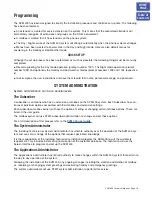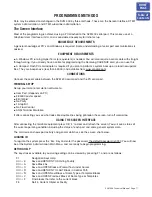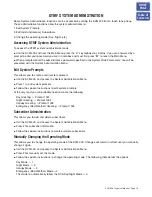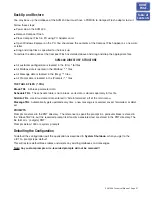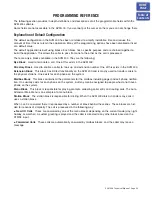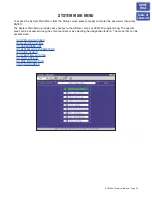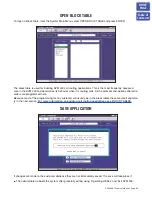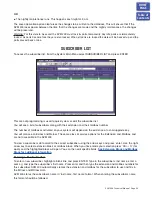
Call Forward to Voice Mail
Any station on the DS 616 phone system may be forwarded to the SVM 400 voice
mail. Forwarding types are forward all calls, forward only when busy, forward only when no answer, or forward
when either busy or no answer.
Call Record
The SVM 400 card installed in your DS 616 phone system, you may record conversations in
progress. Simply press a button to record the current conversation in your mailbox or any other mailbox. An
optional tone with a programmable delay may be played to callers during the recording process.
Note: Call Record utilizes the conference feature. The number of people who can use the CR feature simultane-
ously is limited by the number of available conference circuits in the system.
Warning:
Before using this feature, make sure that you are not violating any state or federal laws. Some states
require that the recorded party be notified. STA is not responsible for any illegal use of this feature.
Caution: These features make use of on-demand or real time recording, and depend on the availability of a free
port.
There are three reasons for this:
a) The use of this feature places an increased burden on the usage of system ports. The auto attendant takes
only a few seconds to answer and transfer a call, a typical voice mail message takes 20 or 30 seconds, but
a recorded conversation can last several minutes.
b) Although the SVM 400 system employs in-band technology making it more port efficient than conventional
systems, it is still easy for both ports of a two port system to be in use, (e.g. one person checking their
messages and one incoming call being answered). When this happens the SVM 400 can not be accessed,
no auto attendant, no voice mail, and no call record.
c) If all ports are busy, a subscriber can check messages later, an incoming caller can be routed to the opera-
tor but the requirement for immediate call recording can occur with no warning and if missed usually can
not be repeated.
Date and Time Stamp
Each message you receive will be stamped with the time and date of its arrival.
External Number Notification
When you have messages in your mailbox, you may be alerted at your cell
phone, home phone or any other phone. The SVM 400 will make 3 attempts to contact you. If it encounters a
busy signal it will try again in 5 minutes, if it encounters a no answer it will try again in 15 minutes.
External Pager Notification
When you have messages in your mailbox you may be notified via your pager.
The display on your pager will show your mailbox number. The SVM 400 will make 3 attempts to contact you. If
it encounters a busy signal it will try again in 5 minutes, if it encounters a no answer it will try again in 15 min-
utes.
Follow Me
Each subscriber may set an alternate phone number where they would like their calls transferred.
This feature may be activated for a specified period of time, after which the transfer destination will revert to the
subscribers extension number.
Individual Mailbox Greeting
Each mailbox has its own associated individual greeting recorded in the mailbox
owners voice. This may be changed as frequently as you desire.
Individual Mailbox Name
Each mailbox has its own associated individual name recorded in the mailbox
owner’s voice.
Individual Mailbox Password
Each mailbox has its own associated individual password selected by the user
or system administrator. This provides some security and prevents unauthorized access. The password may be
up to 8 digits long.
Message Counter
Whenever you access your mailbox, you are told the number of new and old messages.
You may selectively listen to the new or the old messages.
Message Delete
When a message has been heard, you may delete it.
Message Fast Forward
When listening to a message you may fast - forward 5 seconds. This is useful if you
are looking for a specific piece of information like a phone number.
Message Forward With Append
Messages received in your mailbox may be forwarded to other mailboxes
on the system. Introductory remarks may be added for the recipient in front of the message.
SVM 400 Technical Manual Page 10
HOME
PAGE
Table of
Contents

















